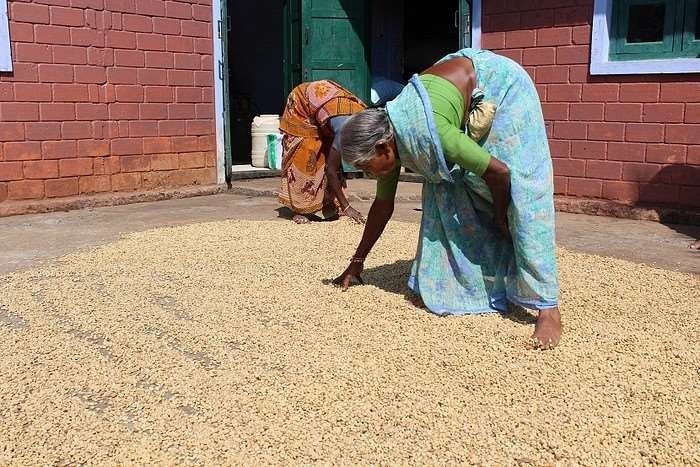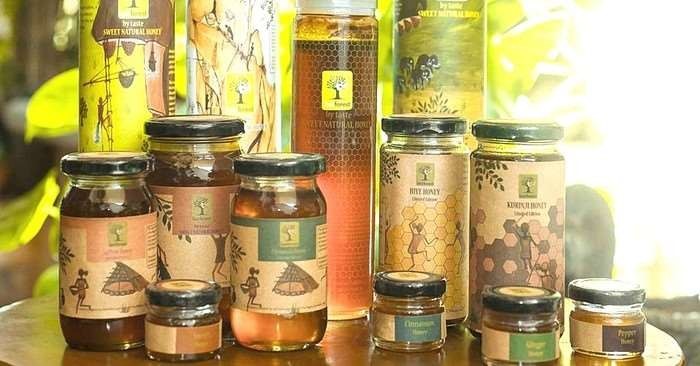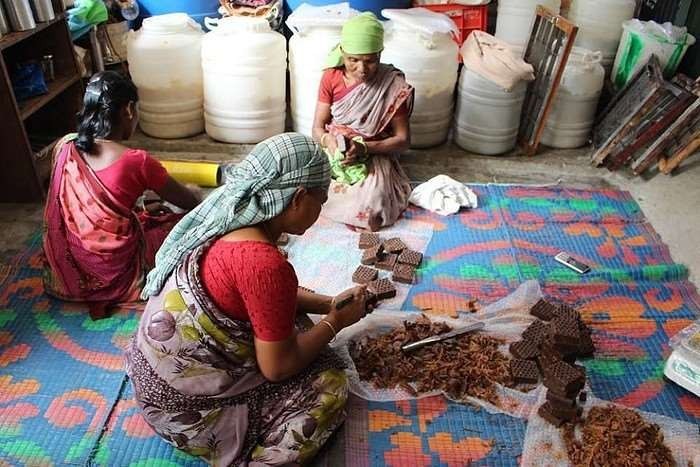This Awesome Honey Doesn’t Harm the Bees & Helps Empower Thousands of Tribals!
- The opportunities for labour are many, but the wages are uncertain. After many years of this instability, when the opportunity for a steady income came Maheshwari’s way, she was excited and weary.
- 38-year-old Maheshwari is a former daily wage labourer in the tea estates of Kottagiri, in the Nilgiri District. While tea plantations look inviting during a holiday, there is no vacation for labourers like her. They toil on the deceptively beautiful but treacherous terrain of the estates.
- While the opportunities for labour are many, their wages are uncertain. For all the hard work she put in, Maheshwari earned just Rs 60 per day.
- So after many years of this instability, when the opportunity for a steady income came her way, she was excited and weary. Maheshwari joined Last Forest Enterprise, a company that believes in shifting power to the producers.
- Since then, things have changed dramatically for her.
- Today, she is on a regular payroll, earns a steady income between Rs 200-400 per day, and is able to support her son’s education The collection of non-timber forest produce (NTFP), mainly silk cotton in a sustainable manner, is the credo of Last Forest.
- The brainchild of Mathew John, Pratim Roy, and Snehlata Nath, Last Forest was incubated by the NGO, Keystone Foundation. It was primarily created as a marketing platform for the indigenous communities, and self-help groups.
- Managing Director Mathew John says, “Last Forest started to support local and marginalised communities in the Nilgiri Biosphere Reserve. We pioneered the concept of recognising different kinds of honey based on taste and bee species. We are working to empower and enrich communities and facilitate the connect with the market through sustainable practices.”
- Kotagiri, which falls under the Nilgiri Biosphere Reserve, is home to a wide variety of flora and fauna as well as different tribal groups like the Todas, Kotas, Irullas, Kurumbas.
- Over the years, Last Forest has been providing training in sustainable harvesting and organic agriculture to the residents. Their mission is to preserve, conserve and nurture the environment.
- The changes they bring to the ground are not revolutionary, but with the right touch and methods, they bring about a significant positive change. For example, after the honey was collected, the beeswax would be discarded as waste. With the help of the organisation, the wax is also utilised in an efficient manner, thereby increasing the earning potential of the communities.
Early years
- Speaking to The Better India of the initial days Communication manager Madhu, says, “The immediate challenge when we started was to get access to these communities. Most of them lived in very remote areas and our goal was to provide them with medical support and basic amenities like water. These were lacking severely.”
- The process required them to make efforts to build local trust. Madhu recounts that once they were able to do this, the communities were far more receptive to them and their ideas.
- “Even now, the power of running the producer company is completely vested with the communities. We have to acknowledge the fact that we are in their space and must respect that,” he says.
- Madhu explains, “Initially, just to give the products a boost, Keystone Foundation was buying the products. Then, in 2010, when we found that there was a market for it all, Last Forest came into the picture.”
- Honey was one of the first products that helped them create a large-scale impact. It had a ready market in the urban areas and was also the source of livelihood for a number of tribal honey collectors. Their experience set the snowball rolling for Last Forest.
How is the honey collected?
- Madhu answers, “The tribal communities we work with have their own traditional methods of collecting honey. One way is by using smoke. The bee collectors basically hang from rocks. (Many beehives are made under cliff hangs in the wild. The collectors are lowered over the edge to collect the honey). While this method shocks the bees for a while, the hive remains intact, and no damage is done to it while the honey is collected.”
- This method allows the bees to return to the hive almost immediately after the honey is collected.
- “The other way is by carefully removing the middle portion of the hive. In this method too, no harm is caused to the colonies inside the hive. It also similarly allows for the bees to go back to the hive,” says Madhu.
- Promotion The emphasis in procuring honey is to ensure that no harm is caused to the hive or the bees. These processes require precision and tact.
- From selling the honey, Last Forest has now developed a range of products like balms, lip balms, and soaps. These products use beeswax which was previously discarded.
- They have also started manufacturing beeswax wraps as a natural alternative to plastic wrap for storing food.
- Slowly diversifying from honey, the tribal community also sources and plucks local spices and coffee. “The Toda community also makes some pretty handiwork (embroidery) on shawls and stoles. Some of them even make kurtas and shirts that we retail,” says Madhu.
The Impact
- It is interesting how Last Forest has impacted the lives of the local community members.
- Kamala, who has been one of the longest- serving women at the producer company, joined the centre as an NTFP collector. While she is 68 today, and not actively involved in the day-to-day workings, her expertise is much sought after.
- She has developed skills and also brought others like her to work with the producer group. She has also got her husband involved in the procurement of honey and beeswax!
How does this work?
- A producer company called Adhimalai is part of the NGO. Its 1,600 shareholders are from the tribal communities, as are the Directors.
- They set the cost of the products and control how they are sold.
- Madhu shares, “This process ensures that the producer company and its members, the tribal communities, have complete control on the products.”
- The biggest takeaway from working with the organisation has been the assurance of a steady source of income for the community members. “From having to toil as daily wage labourers with no steady income, to being able to support their families; the growth curve for the community has been great,” says Madhu.



